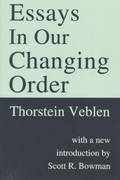Question
Suppose we have a commuter that has decided to allocate M dollars to housing, commuting,and dining. Let P be the price of Housing, h(x) be
Suppose we have a commuter that has
decided to allocate M dollars to housing, commuting,and dining. Let P be the price of
Housing, h(x) be the amount of housing consumed as a function from the distance to the city,
X be the distance to the city center, and t be the commuting cost per mile. Furthermore, let's
add one more thing to the model: suppose city-level restaurant-quality changes with distance
to the city center - e.g there are better restaurants (or more) at the city center. For simplicity,
assume all restaurants charge the same amount for a meal (regardless of quality). Let
d(x)denote the amount of "restaurants" consumed (using "d" for "dining") and pd be the price of
dining. The commuter can allocate Msuch that:
Ph(x) + tx + pdd(x) =M
A). We have the following choices for d(x): either d(x) = 5 + 3x or d(x) = 53x.
Which one makes more sense to use in the context of this problem, and why?
(b) Now let h(x) = a (where a >0) and t= 6. Use whatever you chose for d(x) in
part a for the rest of the problem. Derive the commuter's bid rent curve.
(c) What restriction do you need to put on the model to ensure the bid rent curve
you derived has a negative slope?
(d) At what distance from the city center x is the commuters' willingness to pay
for housing zero? You can assume the restriction you placed in the part c holds. Do you
need any additional assumptions for the expression you derive here to be positive? If so,
what? If not, explain why it is always positive.
Step by Step Solution
There are 3 Steps involved in it
Step: 1

Get Instant Access to Expert-Tailored Solutions
See step-by-step solutions with expert insights and AI powered tools for academic success
Step: 2

Step: 3

Ace Your Homework with AI
Get the answers you need in no time with our AI-driven, step-by-step assistance
Get Started


